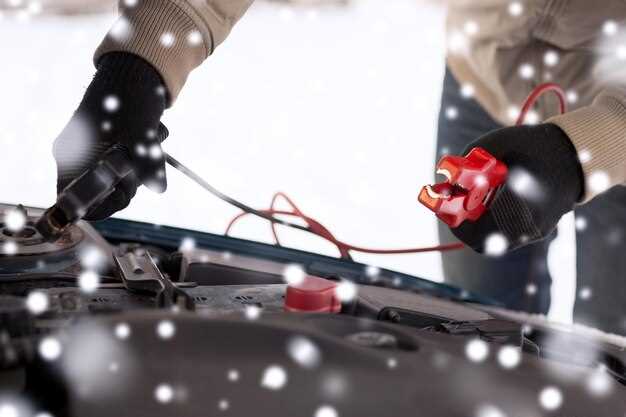

Electrical problems can be a significant source of frustration for Mustang owners. Whether you are experiencing issues with your headlights, dashboard lights, or other electrical components, identifying the root cause of these problems is essential for restoring your vehicle to optimal performance. Among the most common culprits are blown fuses, which can disrupt the flow of electricity and lead to various malfunctions.
Before diving into complex troubleshooting, it is crucial to understand the basic electrical system of your Mustang. Utilizing the appropriate tools and techniques, you can effectively diagnose and resolve these electrical issues. From testing fuses to checking wiring connections, each step plays a vital role in maintaining your vehicle’s electrical integrity.
In this article, we will explore common electrical problems faced by Mustang enthusiasts and provide practical solutions to address them. By gaining insight into the electrical system and learning how to troubleshoot effectively, you can ensure that your Mustang remains reliable on the road.
Identifying Common Electrical Issues in Mustangs

Mustangs, known for their performance and style, can often present electrical problems that may hinder their operation. Recognizing these issues early is crucial for maintaining the vehicle’s performance.
One common problem is a faulty battery. Symptoms may include dim headlights or difficulty starting the engine. Regularly testing the battery and ensuring terminals are clean can prevent these issues.
Another frequent electrical issue involves the alternator. A failing alternator can lead to a drained battery and result in electrical failures while driving. Signs include warning lights on the dashboard and unusual sounds coming from the engine area.
Wiring problems are also prevalent in Mustangs, especially in older models. Corroded or damaged wires can disrupt the electrical system, leading to malfunctioning lights, gauges, or other accessories. Inspecting wiring for wear and ensuring connections are secure is essential.
Fuse failures can cause specific electrical components to stop working. It’s important to regularly check fuses associated with lighting, audio systems, and power windows, replacing any that are blown to restore functionality.
Finally, issues with the ignition system can lead to starting problems. Faulty ignition coils or switches can abandon you stranded. Regular checks and timely replacements can help avoid these critical failures.
By being aware of these common electrical problems, Mustang owners can take proactive measures to keep their vehicles running smoothly and efficiently.
How to Check and Replace Fuses in Your Mustang

Fuses are critical components in your Mustang’s electrical system, protecting it from problems caused by overloads and short circuits. Knowing how to check and replace fuses can save you time and help you resolve electrical issues effectively.
Step 1: Locate the Fuse Box
Your Mustang’s fuse box is typically located under the dashboard on the driver’s side or in the engine compartment. Refer to your owner’s manual for the exact location and diagram of the fuse box.
Step 2: Identify the Blown Fuse
Once you access the fuse box, look for the fuse that corresponds to the electrical component experiencing problems. Use the fuse diagram to help identify which fuse to check. A blown fuse will have a broken wire inside or appear discolored.
Step 3: Remove the Fuse
Using a fuse puller or a pair of needle-nose pliers, carefully remove the suspect fuse from the fuse box. Be cautious not to damage adjacent fuses or the fuse box itself.
Step 4: Inspect the Fuse
Inspect the removed fuse closely. If the filament is broken or the metal inside appears charred, it indicates that the fuse has blown and needs to be replaced.
Step 5: Replace the Fuse
Match the blown fuse with a new one of the same amperage rating. It’s essential to use a fuse with the correct rating to prevent further electrical problems and ensure the safety of your Mustang. Insert the new fuse into the appropriate slot in the fuse box.
Step 6: Test the Electrical Component
After replacing the fuse, turn on the ignition and test the electrical component that was previously malfunctioning. If it operates correctly, the issue may have been the blown fuse. However, if the new fuse blows quickly, it indicates a deeper electrical problem that requires further investigation.
Regularly checking your Mustang’s fuses can help you maintain its electrical system and avoid unexpected issues. Always consult your owner’s manual for specific guidance related to your model.
Troubleshooting Electrical Components and Wiring Problems
When you encounter electrical issues in your Mustang, the first step is to systematically identify the underlying problems. Begin by inspecting the fuses in the fuse box. A blown fuse can cause a complete failure of the electrical component associated with it, so check for any visible signs of damage or burnt-out wires.
If you find a blown fuse, replace it with a new one of the same amperage. If the new fuse blows shortly after installation, this indicates a more significant issue within the wiring or the electrical component itself, and further investigation is necessary.
Next, inspect the wiring harness for any signs of wear, corrosion, or fraying. Damaged wires can lead to intermittent or complete electrical failures. Pay special attention to connections and grounding points, as poor connections can create resistance issues that affect the system’s performance.
Utilize a multimeter to test the continuity of the wiring. This tool will help you determine if there are any breaks in the circuit. When checking, ensure the vehicle is off and the battery is disconnected to avoid any accidents.
If specific components are malfunctioning, such as lights or the radio, check their connections. Disconnect and reconnect these components to ensure a good connection. Additionally, look for any moisture or debris which might cause intermittent failures.
In some cases, electrical problems may stem from components like relays or switches. These should also be tested for proper operation. Substituting with known working parts may assist in diagnosing whether the issue lies with the component itself or elsewhere in the system.
By methodically checking fuses, wiring, and components, you can effectively troubleshoot and resolve electrical issues in your Mustang, restoring functionality and performance.






